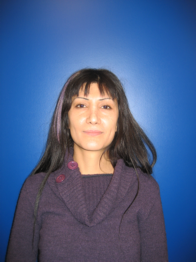Stimuli responsive polymer/quantum dot hybrid platforms modified at the nanoscale
Promotion date: 19. March 2010
Promotor: Prof. Dr. Julius Vancso
Assistant Promotor: Prof. Dr. Jennifer Herek
| Fabricating quantum dots polymer hybrid nanostructures, enable realization of many applications, because encaging QDs within polymer matrices enables the control over optical and spectroscopic properties, and introduces a strong resistance to chemical and photo degradation. The research described in this thesis aims at: synthesis and characterization of CdSe/ZnS core/shell QDs; synthesis and characterization of temperature-responsive polymer matrices; and fabrication of assemblies with potential applications as sensing devices, to be used in bio-nanotechnology. Furthermore, applications of QDs in bioscience and medicine were reviewed with a special emphasis on the QD cytotoxicity. It is necessary to elucidate the potential adverse effects of these materials, not only for the concerns about the human health and environment protection, but also for the industry to make use of these promising materials in larger scales. |
Was there a special moment during your thesis project you remember especially?
The entire period was special, I guess. Starting as a biologist, I learned a lot of pure physics and also of fabrication techniques. Step by step we managed to build temperature sensors based on QD fluorescence. We have synthesized novel thermoresponsive coatings for QDs. We published our results in some high ranked magazines on nanotechnology and macromolecules: Small, Nanotechnology, Macromolecules.
The possibility to go and visit conferences, in Holland and abroad, I appreciated a lot. Also, I worked two and a half months in Singapore at the research institute IMRE (Institute of Materials Research and Engineering). Further, I collaborated with Wageningen University. With the Biophysical Engineering group of professor Vinod Subramaniam, we worked on a joint publication.
What kind of researcher would you describe yourself to be?
As a researcher I am a hardcore experimentalist and a hardworking type of person. So, I spent a lot of time working in the chemical lab, but my project did not involve any cleanroom experiments. Although the project was written, I had a lot of freedom to choose my own way of tackling the subject and finding solutions. Doing so I developed a general idea of the field I was working in. I think, that is better than to specialize and going deep into one solitary topic.
What are your future plans?
My ambitions lie in the realm of an academic career. I will go and work for the Biomolecular Nanotechnology group, led by professor Jeroen Cornellissen, in a post-doc project. I believe that what I learned during my PhD will prove useful to this project, in which more biological applications are expected. This challenge I like very much, because of the practicality of the research and the big share of biology involved. Both features are appealing to me.
Did you feel part of the Mesa+ institution during your thesis project?
Being part of Mesa+ really did give me a lot of confidence. I experienced being member of an institution that is known for quality research, all over the world. The financial structure, the scientific meetings and the open working atmosphere are of a high standard.
Perhaps meetings between colleagues of different groups, shared around a central topic, can be of added value more. I’ve really enjoyed the meetings we had among the members of different optics groups at the University of Twente. This type of meetings will open up new ideas. Also a second opinion from expert colleagues can be of great value.

